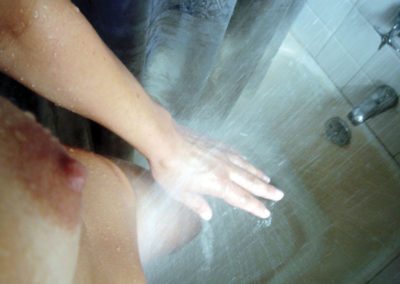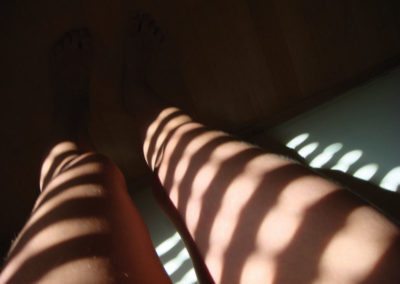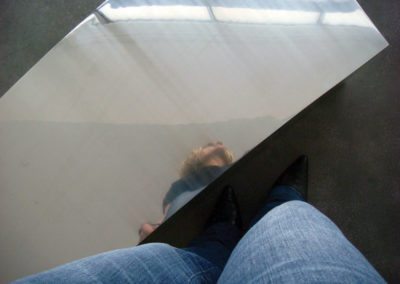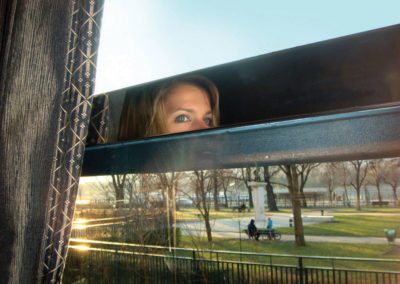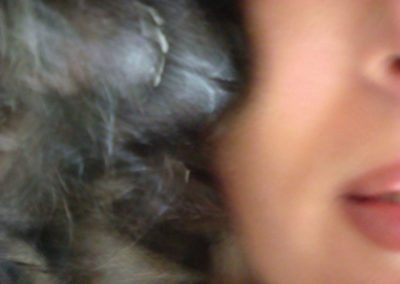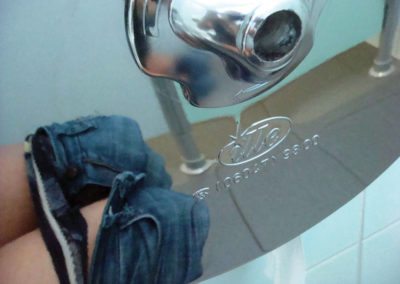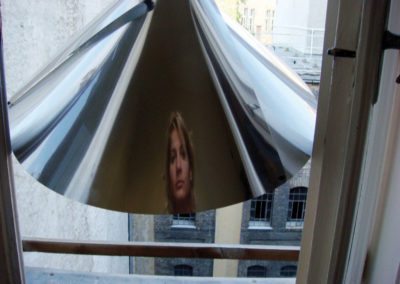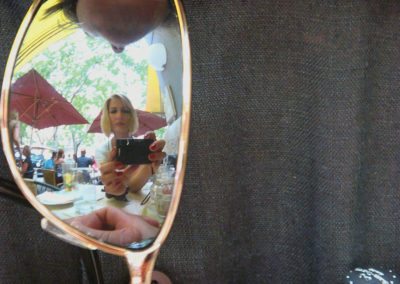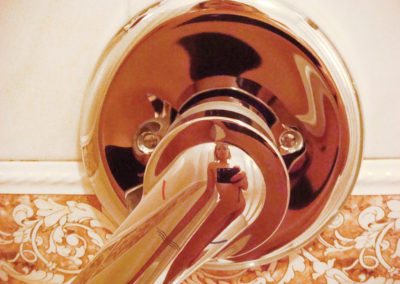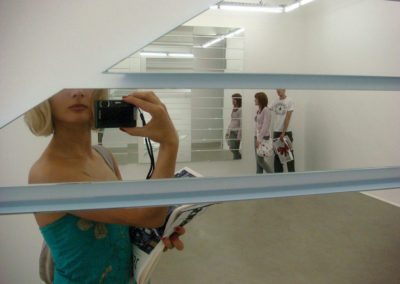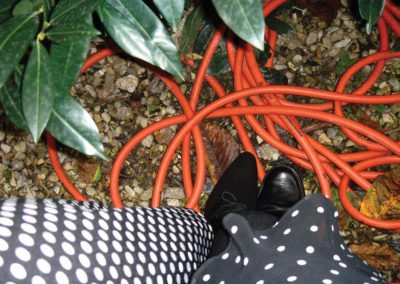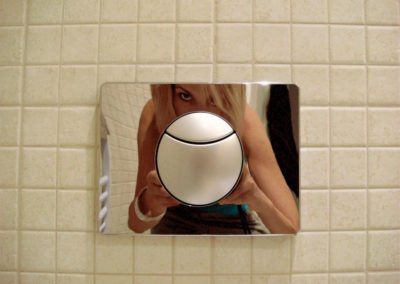You Can’t Take a Self-portrait by Accident
And because the subject’s identity will continue to be propped upon external images its battle-to-the-death with its own mirror image is only the first installment in a life-long war between itself and everything else.
We feel like taking a glimpse inside Luca Gőbölyös’s life when looking at her series Sundaygirls. This is because the artist (or rather, her partial reflection) appears in every shot, be it a bathroom, a train, a waiting room, or a balcony. However, the luring details reveal something different. Watching her pictures, we enter a maze of reflections, where we don’t really see what we originally thought we saw. Although the photographer is without doubt present in the pictures, if it’s a small segment of her face or body that we see in the picture frame, then the image is usually blurred, and when we clearly see all of her body, then it is distorted by reflective objects, such as a sink, a pot, a train window, a security camera, sunglasses, or a doorknob. In other places, the figure is so small that it’s barely visible. Or, if it’s not blurred or distorted, then something is surely cut off. If some parts are reflections while others are not, then it is the switching of dimensions that throws us off. Finally, if the mirror is missing completely, then it’s other optically disturbing elements that get in the way of the voyeur, such as beams of light or jets of water. Since these photographs show everyday moments (even better: beautiful female parts) and many carry the promise of seeing what lies behind the covers and cut-offs, they force the viewer into the position of a voyeur. The peeking is doomed to failure, however, thanks to a complete arsenal of defensive optical warfare. Luca is everywhere and nowhere. The borders of the photos seem spontaneous, as if the quick action wasn’t preceded by any planning or tricks, and as if the creator offered us a snapshot of reality, or at least as much of herself as she could fit into one picture. Because of the planned reflections, however, the pictures manifest reflection itself, providing us with an experience of the mediatedness and fragmentation of spectacle and knowledge.
But not only of these. Since the artist is present in these photographs (even if as a frustratingly small, blurred, or fragmented effigy), the question of self-portrait is unavoidable. Self-portraits are the tools and visual manifestations of identity construction, self-discovery, and self-representation, but which kind of self-portraits are Luca Gőbölyös’s pictures? Although we could construct entire narratives around some of them, their subjects are very different from the important moments of the artist’s (supposed) life. Furthermore, they do not add up to a coherent and whole narrative that could represent the artist’s life course or progress. Nor are they constructions or expressions of an artistic ego that has a clear centerpoint. Even though some may have an emotional background, they cannot be put together into a psychobiography. Gőbölyös eludes this labelling, and the personality represented by her pictures is difficult to grasp, due to her distancing tools. Of course, as a photographer, Gőbölyös is far from indeterminate, as she is only playing hide-and-seek. In such a way, she evokes the self-portrait type that represents the uncertain self and marginalized (female) persona, while making her personality difficult to grasp. Even the title and objective meaning serve as a deception operation to lure the viewer away from the self-portrait. In Gőbölyös’s interpretation, the actions and settings of the Sundaygirls looking for celebration or recreation evoke not only holidays, but also everyday life. The setting, along with the objects within it, refers mostly to getting ready (bathroom, kitchen) and being in transit (waiting room, baggage claim, train). Together with the snapshots reflecting within them, they form an entire novel. The surrounding objects, which tear the portrait into pieces sometimes to the point that it becomes unrecognizable, have one common, important characteristic. The main purpose of the multiple settings and shiny objects is to allow the photographer to use a thousand different kinds of reflection. Self-portraits presume self-reflection even without mirrors, but their presence accents not only their mediated nature, but also the importance of the mirror. However what the mirror means also depends on who is using it. It is a tool for self-discovery if a man looks into it and sees his soul, and for vanity, if a woman uses it to examine her own beauty.
Sundaygirls therefore is and isn’t a self-portrait. Using the fragmentation of the image, Luca Gőbölyös, as a woman and as a contemporary author, evokes related issues of identity, and questions the possibility of discovery by using a visual hide-and-seek. In the way that the shiny objects reflect the face, the bearer of which fragments, divides and distorts it to the point of unrecognizability, the series becomes a metaphor of the incomprehensibility of personality.
Erzsébet Tatai
Commissioned text.

